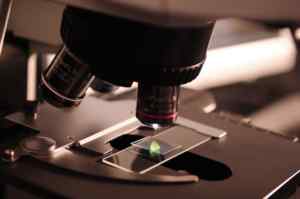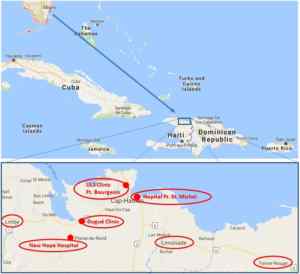Introduction
Vasectomy is a common and effective method of permanent birth control for men. It involves cutting or sealing the vas deferens, preventing sperm from reaching the semen. While vasectomy is generally a safe and straightforward procedure, some men may experience a condition known as Post Vasectomy Pain Syndrome (PVPS). This blog aims to shed light on PVPS, its potential causes, symptoms, and how it can be managed.
What is Post Vasectomy Pain Syndrome (PVPS)?
 PVPS, or Post Vasectomy Pain Syndrome, is a term used to characterize ongoing or recurring discomfort in the scrotum and testicles after a vasectomy. It’s important to recognize that only a minority of men who undergo vasectomy will encounter PVPS, and for most of them, it’s a temporary issue. Nevertheless, the precise cause of this condition remains not fully understood.
PVPS, or Post Vasectomy Pain Syndrome, is a term used to characterize ongoing or recurring discomfort in the scrotum and testicles after a vasectomy. It’s important to recognize that only a minority of men who undergo vasectomy will encounter PVPS, and for most of them, it’s a temporary issue. Nevertheless, the precise cause of this condition remains not fully understood.
Potential Causes of PVPS
The exact causes of PVPS are not definitively known, but several factors have been suggested as possible contributors:
Inflammation: Some researchers believe that inflammation or an autoimmune response triggered by the presence of sperm in the body after a vasectomy may lead to chronic pain.
Sperm granulomas: The formation of sperm granulomas is the result of the body’s immune reaction to sperm leaking from the cut end of the vas. It may cause temporary discomfort or pain
Nerve effect or Damage: The development of perineural fibrosis or damage to nerves in the scrotum during the vasectomy procedure could result in chronic pain.
Epididymal Congestion: A buildup of sperm and fluid in the epididymis (a coiled tube located behind the testicles) or epididymal blowout may cause discomfort or pain.
Psychological Factors: Stress, anxiety, and other psychological factors can amplify pain perception and may contribute to PVPS.
Symptoms of PVPS
PVPS symptoms can vary in severity and may include:
Managing PVPS
If you experience persistent pain or discomfort after a vasectomy, here are some potential strategies for managing PVPS:
Surgical Options for PVPS
1. Sperm Granuloma Removal: Surgery to remove localized scar tissue on the vas deferens can alleviate pain in specific cases.
2. Microdenervation of the Spermatic Cord (MDSC): This surgical procedure isolates nerves and veins in the spermatic cord to reduce pain signals, often effective after a cord block.
3. Reversal: In some cases, a vasectomy reversal (vasovasostomy) may be considered to reconnect the vas deferens, although this procedure is not always successful.
4. Epididymectomy or Orchiectomy: Removing the epididymis or testicle, especially when cysts or granulomas are present, can relieve associated pain.
Conclusion
Post Vasectomy Pain Syndrome is a relatively rare but challenging condition that can significantly impact a man’s quality of life. If you suspect you have PVPS or experience persistent scrotal pain after a vasectomy, consult a healthcare professional who can evaluate your symptoms and recommend appropriate treatment options. While PVPS can be frustrating to deal with, many individuals find relief through various interventions, and with the right support and management, they can regain their comfort and peace of mind.
Note: One Stop Medical Center provides the service of no-Scalpel Easy Vasectomy. We have two office locations in Edina, Minnesota, and Casselberry, Florida. If you are interested in vasectomy, Please fill out the online registration first, we will call you in 2 business days, or please call us at 1-888-992-0019 if any questions.






 Vasectomy may NOT be a good choice for the men in Minnesota who:
Vasectomy may NOT be a good choice for the men in Minnesota who:
 One of the biggest risks and potential effects of undergoing a
One of the biggest risks and potential effects of undergoing a  From self-order kiosks to robot vacuum cleaners and robot cafes, the rise of robot-assisted experiences in recent years has been undeniable. But would you ever consider participating in a robot-assisted surgical procedure?
From self-order kiosks to robot vacuum cleaners and robot cafes, the rise of robot-assisted experiences in recent years has been undeniable. But would you ever consider participating in a robot-assisted surgical procedure? However, costs aside, it’s still noteworthy to highlight the reliability and effectiveness of robot-assisted vasectomy reversals.
However, costs aside, it’s still noteworthy to highlight the reliability and effectiveness of robot-assisted vasectomy reversals.  The height of the eugenics movement (1920s to mid-20th century) saw compulsory sterilization programs established in over 30 states, resulting in over 60,000 sterilizations of often healthy people. Criminals and prison inmates were especially targeted, as well as those deemed “feeble-minded,” mentally deficient, or simply capable of passing on undesirable genes.
The height of the eugenics movement (1920s to mid-20th century) saw compulsory sterilization programs established in over 30 states, resulting in over 60,000 sterilizations of often healthy people. Criminals and prison inmates were especially targeted, as well as those deemed “feeble-minded,” mentally deficient, or simply capable of passing on undesirable genes.



 It might seem odd to dedicate an entire day to vasectomies, but for Dr. Shu and the other 1,200 doctors participating in World Vasectomy Day on November 17, it’s an important event that spreads awareness on the most effective but underutilized methods of contraception: the vasectomy.
It might seem odd to dedicate an entire day to vasectomies, but for Dr. Shu and the other 1,200 doctors participating in World Vasectomy Day on November 17, it’s an important event that spreads awareness on the most effective but underutilized methods of contraception: the vasectomy.






